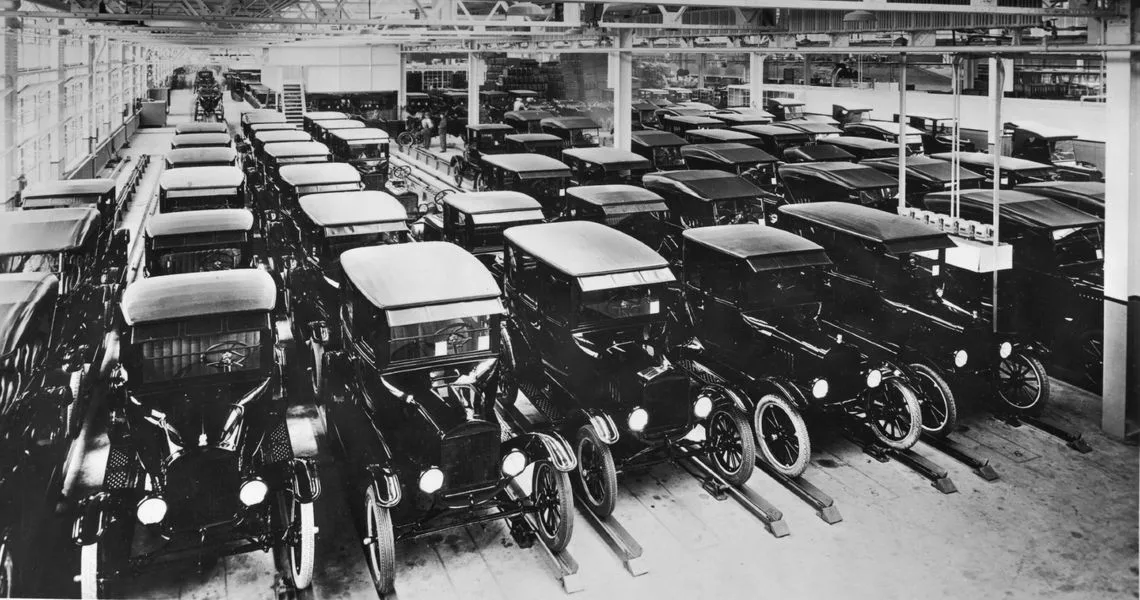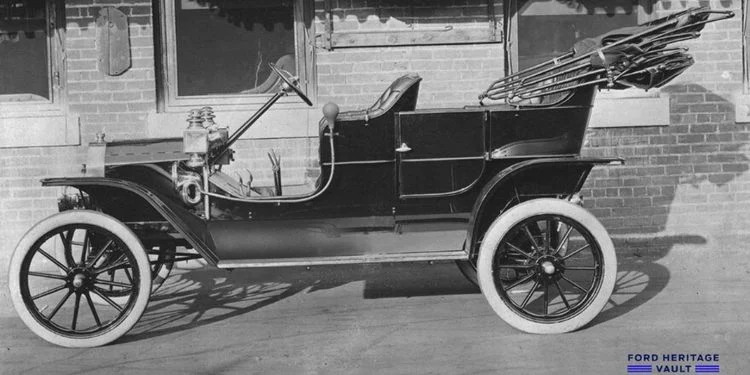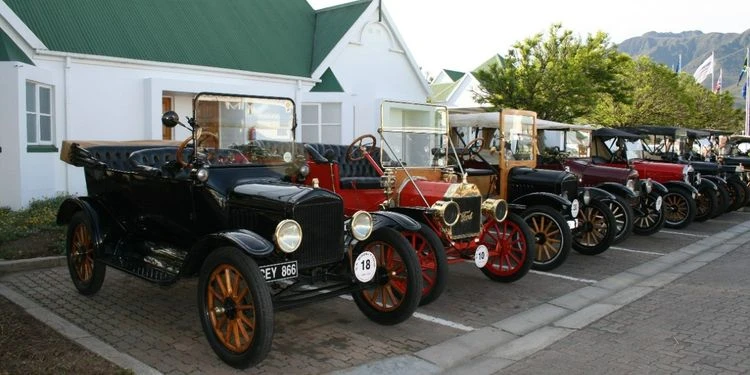Beyond Repair: Historic Ford Model T Factory In Florida Will Be…

Getty Images
In a sad turn of events for automotive history buffs, the old Ford Motor Co. plant in Jacksonville, Florida has been given the green light for demolition. On June 12, city authorities granted ELEV8 Demolition a permit to tear down the historic factory located in the Talleyrand area. According to Duval County property records, it was erected all the way back in 1924 and Henry Ford himself had a hand in the building’s design and operation. The riverfront factory served as an assembly plant for his iconic Model T and Model A.
The legendary Ford Model T is a household name, but not everybody knows the story of how it changed the automotive world forever. The Model T first rolled off the assembly line in 1908 and Ford continued its production until 1927. In less than two decades, the classic car cemented itself in the pages of automotive history. As the Jacksonville plant faces its final days, let’s take a trip down memory lane and look at the lasting impact of the Model T.
The Sad End Of Ford's Only Florida Factory

Ford
Ford operated the Jacksonville Plant beginning in 1924. The factory produced the Model T and Model A until 1932, when the Great Depression killed the buying power of the American public. Many of Ford’s satellite plants were closed, and the Jacksonville plant was repurposed as a parts distribution center. It remained in use until 1968.
After the factory changed hands in 1968, the building became a home for several other companies over the years, including a European-import firm and a van conversion business. Finally, it was used as a storage facility for a wooden pallet manufacturer. In 2015, the old Ford plant caught the attention of Amkin Hill Street LLC, who purchased it for $4.4 million. The one and only Ford factory ever constructed in Florida is now set to be torn down. The building had unfortunately fallen into disrepair, and Amkin’s engineers claimed that it was beyond saving.
The building was declared a local landmark back in 2003, which gave it some protection from demolition. However, the deteriorating safety conditions of the building meant that the Jacksonville City Council finally gave the green light to raze the building. The building will make way for a potential ship repair facility. Some preservationists hoped to salvage at least a section of the plant, but unfortunately, their request was shot down.
Even though some City Council members gave a nod to the building’s historic importance, they ultimately based their decision on two factors. First, the condition of the building. Second, the potential for more job opportunities in the Eastside neighborhood. In the end, they granted Amkin’s appeal. Although this is the end for the Jacksonville plant, the legacy of the Model T will live on.
The Jacksonville Plant Opened To Meet Growing Demand

Ford
Henry Ford established the Ford Motor Company on June 16, 1903, with the help of twelve investors. They included the Dodge brothers, who had founded their own company a few years prior. During its humble beginnings, the Ford Motor Company churned out just a handful of cars each day from their Detroit, Michigan factory. Ford produced a lineup of cars from 1903 to 1908. Models A, B, C, F, K, N, R and S were modest sellers, only making up to a few thousand sales each year. Then, in 1908, Ford made history when he introduced the legendary Model T. It was the first mass-produced car in history, and would go on to sell in the millions.
Ford debuted his moving assembly line for automobile production at the company’s Highland Park Plant in Detroit on October 13, 1913. The breakthrough reduced the production time of the Model T from over 12 hours to just an hour and half. It also slashed the price of the Model T, dropping it from a hefty $700 to a pocket-friendly $350 by 1917. The Model T was the first car to be readily affordable for the public.
With demand for the Model T skyrocketing, Ford called on the talented Albert Kahn to design the colossal River Rouge Complex in Dearborn, Michigan. This manufacturing facility was the largest factory in the world after its completion in 1928. In order to expand their investment and meet the surging demand, Ford enlisted Kahn to design a further 17 satellite factories around the globe. One of those factories found its home in Jacksonville, Florida.
The city of Jacksonville sold the old Bentley Shipyards property to Ford in 1923. Construction of the $2 million complex began shortly after and was fully operational in just six months. The impressive site was equipped with powerful boilers and a 75,000 gallon water tower, ready to battle any fire that dared to ignite. The front of the building also featured a parts department and even had its own showroom to flaunt those shiny finished automobiles.
An additional 50,000 square feet were tacked onto the east side of the building in November 1926 to meet the relentless demand for the Model T. By the following year, the plant had already churned out a staggering 75,000 cars. As the wheels of progress turned, the trusty Model T bowed out gracefully in 1928, making way for the brand-new Model A. The plant underwent a retrofitting process to accommodate production of the new model.
The Ford Model T Is The Most Influential Car Of The 20th Century

Ford
The Jacksonville plant produced the Model T from 1924 to 1928. The car stands proudly as the pioneer of affordable automobiles. It unlocked the joy of car travel for the middle-class of America, thanks to Ford’s ingenious assembly-line production. On the streets, the trusty ride was affectionately called the “Tin Lizzie” or the “Leaping Lena.”
The Ford Model T was named the most influential car of the 20th century, finishing ahead of the Mini, Citroën DS, and Volkswagen Beetle. With a staggering 15 million units sold in its lifetime, the Model T held the record for the highest number of car sales until 1972, when the Volkswagen Beetle took the crown. The Model T was still number eight in the top-ten list of best-selling cars as recently as 2012.
Although it was hugely influential, we would scoff at the Model T if it was on sale today. Underneath the hood, the Model T housed a modest 2.9-L inline four-cylinder engine, which churned out only 20 hp. With this power, it reached a top speed of 42 mph and had a fuel economy ranging from 13 to 21 mpg.
By 1918, half of all the cars in the United States were none other than Model Ts. Ford infamously told his management team, “Any customer can have a car painted any color that he wants so long as it is black.” However, in the initial years of production spanning from 1908 to 1913, the Model T wasn’t even available in black. Instead, the cars were offered in shades of gray, green, blue, and red. In 1912, all cars rolled out in a sleek midnight blue with black fenders. It wasn’t until 1914 that all new Model Ts were Ford’s favorite color, and his iconic “any color so long as it is black” policy was finally put into action.
The Ford Model T also made history by becoming the first car to be built simultaneously in multiple countries. Production took place in Canada and England in 1911, and later spread to other countries. By establishing manufacturing centers in major metropolitan areas across the US and abroad, the company minimized both freight expenses and production costs. The Model T was truly the "people's car."
Like this project
Posted Aug 4, 2023
As the Jacksonville plant faces its final days, let’s take a trip down memory lane and look at the lasting impact of the Model T
Likes
0
Views
51
Featured on








